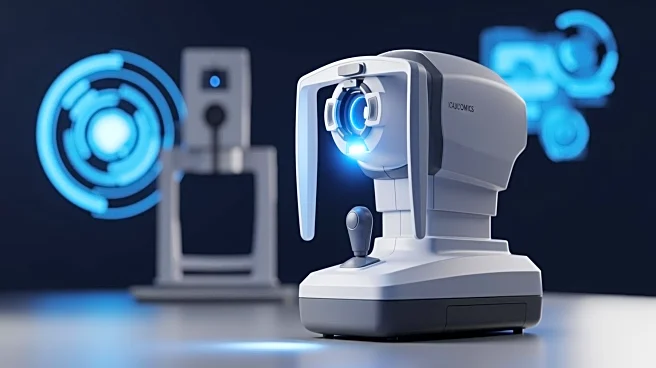What's Happening?
A new AI system, DeepRETStroke, has been developed to detect silent brain infarctions (SBIs) and predict stroke risk using retinal photographs. Silent strokes, which affect 20% of adults, are typically
undetected without MRI scans. DeepRETStroke utilizes deep learning to analyze eye scans, trained on approximately 900,000 images, to transform retinal exams into affordable stroke screenings. The system achieves 85.2% sensitivity, bridging the gap between traditional screening methods and MRI. This AI model was validated across 213,762 images from multiethnic cohorts, demonstrating high accuracy in predicting stroke risk.
Why It's Important?
Silent strokes significantly increase the risk of future strokes, yet they often go undetected due to the impracticality of routine MRI screenings. DeepRETStroke offers a scalable and cost-effective solution, potentially revolutionizing stroke prevention strategies. By utilizing retinal imaging, this AI system provides a non-invasive method to assess cerebrovascular health, which could lead to earlier interventions and reduced healthcare costs. The technology represents a significant advancement in AI-driven medical diagnostics, enhancing the ability to identify high-risk individuals before symptomatic strokes occur.
What's Next?
The implementation of DeepRETStroke in clinical settings could transform stroke prevention, offering a more accessible screening method. However, challenges remain in ensuring the model's generalizability across diverse populations, as current data heavily relies on Chinese cohorts. Future efforts will focus on expanding datasets to include underrepresented groups, improving the model's accuracy and applicability globally. Additionally, further research will explore the biological plausibility of retinal imaging as a predictor of cerebrovascular events, aiming to validate the 'eye-brain window' hypothesis.
Beyond the Headlines
The development of DeepRETStroke highlights the potential of AI in bridging gaps in medical diagnostics, particularly in resource-limited settings. The system's reliance on retinal imaging underscores the importance of interdisciplinary approaches in healthcare innovation, combining ophthalmology and neurology to address complex health challenges. This advancement may pave the way for similar AI applications in other areas of preventive medicine.











